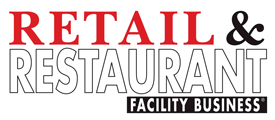For restaurants, few things are more disruptive or expensive than an equipment failure during working hours. Whether it’s a failed refrigerator, a backed-up drain or an HVAC unit that quits in the height of summer, a single breakdown can halt operations, spoil inventory, drive away customers and result in lost revenue and trust. Yet most of these expensive emergencies can be prevented through proactive maintenance.
“Regular inspections and cleaning schedules are the simplest way for restaurants to safeguard uptime and extend the lives of their critical systems,” says Bill Schaphorst, vice president of business development at MaintenX.
Spotting the Warning Signs
The earliest clues that a system is overdue for maintenance are often small: a freezer door that doesn’t seal tightly, faulty gaskets, grease accumulation around an exhaust fan, unpumped grease traps or filters that darken faster than usual.
“A buildup of grease or dust might not seem urgent,” Schaphorst says. “But it can be a sign that the equipment is working harder than it should. That costs you money every day, either through increased energy use or systems that fail faster due to strain.”
In restaurants, the biggest red flags appear in three key systems:
- Refrigeration: Dirty condensers or evaporator coils, worn gaskets and faulty defrost timers all reduce cooling efficiency and put strain on compressors.
- HVAC: Clogged filters, plugged condenser/evaporator coils, worn belts or ungreased fittings force blowers and motors to draw more power and run hotter.
- Exhaust fans: Grease buildup on rooftop fans damages the fan motor and can also lead to the breakdown of the roofing membrane itself, leading to leaks and expensive roof repairs.
Technicians should check these areas on a structured schedule, recording pressures, voltages, temperatures and other performance data through checklists. “Consistency is key,” Schaphorst notes. “If you service equipment on schedule, it will almost always outlast its expected life.”
When Maintenance Saves the Day
Schaphorst explains that one of the most costly and common restaurant failures can occur when grease builds up inside restaurant drain lines. “If a main sewer line clogs and backs up into the restaurant space, the store must close to take care of the issue. There’s no way around it.”
To prevent this kind of disaster, MaintenX recommends jetting or flushing those lines on a quarterly or semiannual basis.
“It’s not glamorous work,” Schaphorst adds, “but it’s what keeps you open.” Restaurants with preventive jetting programs rarely experience full shutdowns, while those without them risk losing an entire day or more of revenue in the event of a backup.
Building a Cost-Effective Plan
Even operators on tight budgets can implement an effective maintenance program. Schaphorst advises focusing first on the systems most likely to cause closures: plumbing, HVAC and exhaust. Regular cleaning, filter replacement and coil inspection can help prevent most outages.
Some multi-unit operators are also saving money by bundling minor, non-urgent repairs. Projects such as patching drywall, replacing ceiling tiles, adjusting door closers, repainting areas and fixing potholes can be combined into a single, scheduled “handyman” visit. “Instead of paying multiple trip charges, one technician can handle everything at once. It’s efficient and keeps facilities in top shape, especially if you have a consistently updated list of projects,” Schaphorst says.
The Role of Data and Technology
While proactive maintenance remains a hands-on discipline, technology is beginning to reshape how restaurants monitor equipment health. Some operators already use systems to track refrigeration temperatures and trigger alarms when readings drift outside the safe range. Others are beginning to use equipment data to predict failures before they happen.
“In the near future, artificial intelligence will make those insights automatic,” Schaphorst says. “We’ll be able to capture data from compressors, motors and fans. Artificial intelligence (AI) will be able to tell us when to service a unit, just like your car now tells you when to change the oil.” Though widespread AI adoption is still a few years off, Schaphorst believes AI technology and predictive maintenance will soon join forces.
Prevent Now, Save Later
For restaurant owners, the math is simple: a few hours of preventive maintenance each quarter can save thousands of dollars in lost revenue and emergency repairs. “You can pay a little to maintain your systems today or pay a lot more when they fail tomorrow,” Schaphorst says.
Proactive maintenance keeps equipment running, protects the guest experience, safeguards the staff’s productivity and helps maintain the restaurant’s reputation. In an industry where every hour of uptime matters, staying ahead of maintenance is the smartest investment a business can make.
— MaintenX is a content partner of Retail & Restaurant Facility Business. For more articles from and news about MaintenX, click here.

